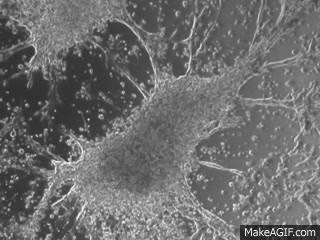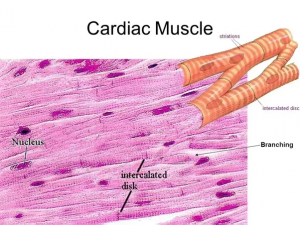2 1.1 Cardiomyogenesis
Cardiomyocytes are the cellular components that collectively form the myocardium, which is the muscular tissue of the heart (Silverthorn et al). The process of cardiomyogenesis involves proliferating bone marrow stem cells that subsequently differentiate into cardiomyocytes (Oh et al.). More specifically, these hematopoietic stem cells are mesenchymal multipotent connective tissue stem cells that transform into specialized cardiomyocytes. An individual cardiomyocyte is binucleated and attached to neighbouring cardiomyocytes through intercalated discs, as shown in Figure 3, which allow for the transmission of electrical impulses throughout the tissue (Silverthorn et al.). This physiology plays a significant role in syncing the contractions of the heart chambers to pump blood throughout the body.
It is important to note that in its lifetime, the human heart only develops one set of cardiac muscle cells, known as cardiomyocytes, during the embryonic and early post-natal phase.
Figure 1. Representation of human mesenchymal stem cells undergoing cardiomyogenesis


